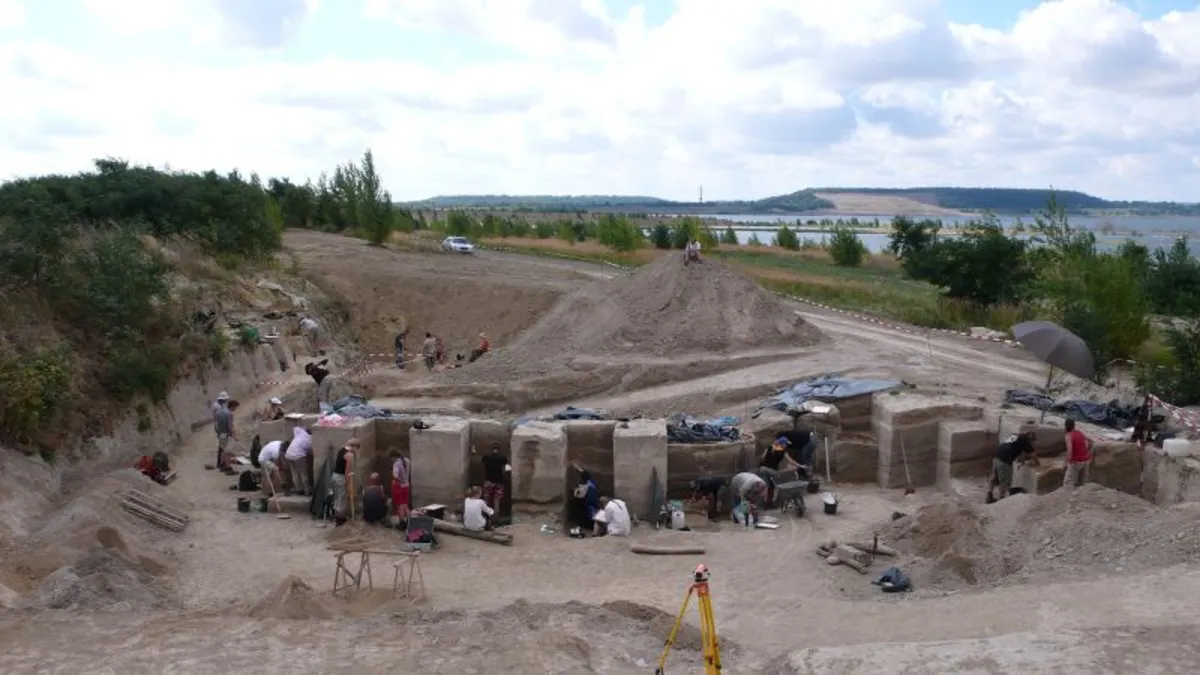
Recent research has unveiled that Stone Age humans living near a lake in present-day Germany were adept at processing animal carcasses for essential fatty nutrients. This revelation depicts a sophisticated operation, often referred to by scientists as a “fat factory,” where the Neanderthals boiled bones on a massive scale. The findings were published in a study in the journal Science Advances on Wednesday, after archaeologists analyzed approximately 120,000 bone fragments and 16,000 flint tools discovered over several years at a site called Neumark-Nord, located south of Halle.
Excavators at Neumark-Nord uncovered a treasure trove of artifacts alongside evidence of fire use. Researchers hypothesize that Neanderthals, who inhabited the region as far back as 125,000 years ago, utilized stone hammers to smash marrow-rich bones into fragments. These fragments were then boiled for several hours, allowing the fat to rise to the surface, where it could be skimmed off upon cooling. This intricate process indicates a significant degree of planning, as it required organizing hunts, transporting carcasses beyond immediate food needs, and designating a specific area for fat rendering.
Wil Roebroeks, a coauthor of the study and a professor of Paleolithic archaeology at Leiden University in the Netherlands, commented, “This attitude that Neanderthals were dumb — this is another data point that proves otherwise.” This research contributes to a growing body of evidence that challenges the original brutish stereotype of Neanderthals, demonstrating their intelligence and resourcefulness.
The study also highlighted the Neanderthals' understanding of nutrition, particularly during the 300 years they occupied the German site. The researchers found that the bone grease produced was crucial in their diet, which relied heavily on animal foods. A balanced intake of fat is vital for a healthy diet, especially for hunter-gatherers like the Neanderthals. A lack of dietary fat can lead to protein poisoning, a condition that impairs the liver's ability to process excess nitrogen, potentially resulting in severe malnutrition.
Neanderthals, with average body weights ranging from 50 to 80 kilograms (110 to 175 pounds), needed to restrict their protein intake to below 300 grams (about 10 ounces) daily to avoid this condition, translating to about 1,200 calories — far below their daily energy requirements. Consequently, they had to source additional calories from fats or carbohydrates, making the extraction of fat from bones a vital resource.
The researchers identified remains from 172 individual large animals, including horses, deer, and aurochs, large extinct bovines. It became evident that Neanderthals selectively chose the longest bones, which would yield the most marrow. The study authors speculated about the methods used by Neanderthals for processing bones, suggesting they might have made containers from birch bark, animal skins, or stomach linings to boil water and extract fat over a fire.
Geoff Smith, a senior researcher in zooarchaeology at the University of Reading and coauthor of the study, proposed that Neanderthals may have consumed the fat in the form of a “greasy broth” enhanced with plants for flavor and nutrition. Charred remains of hazelnuts, acorns, and sloe plums were also found, indicating a diverse diet.
Ludovic Slimak, an archaeologist at the French National Centre for Scientific Research (CNRS), expressed excitement over the study's findings, stating, “They finally offer clear archaeological confirmation of what many of us had long suspected: that Neanderthals not only valued within-bone lipids but developed specific strategies to extract and process them.” This aligns with the broader archaeological evidence that portrays Neanderthals as skilled big-game hunters with a refined sense of ecological adaptation.
Bruce Hardy, the J. Kenneth Smail Professor of Anthropology at Kenyon College, emphasized the significance of the Neumark-Nord site, calling it “the best example yet of bone-grease rendering” from this period in the Stone Age. He noted that the combination of evidence presented in this research could represent a pivotal moment in understanding Neanderthal dietary practices and survival strategies.